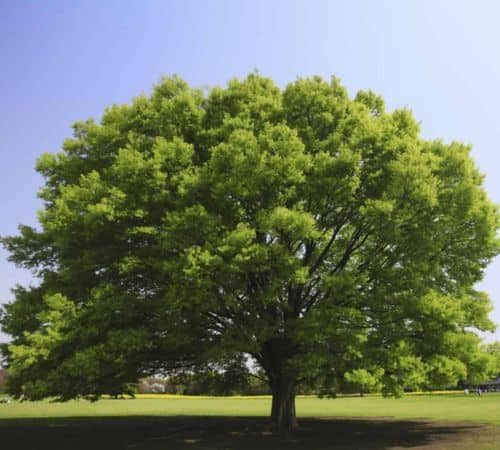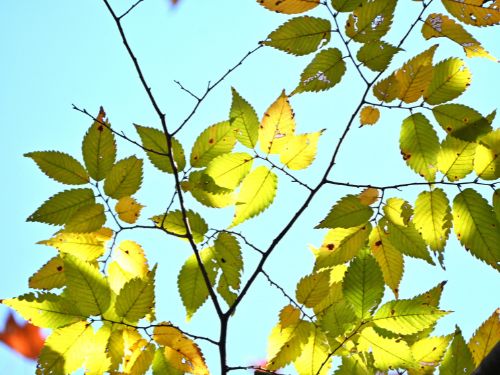Zelkova Trees, originating from East Asia, primarily China and Japan, includes several species and is known for its graceful silhouette, impressive size, and adaptability. One of the defining characteristics of Zelkova lies in its captivating bark, which evolves with age into a corky texture, adding visual interest and tactile allure. Its impressive size and vase-shaped canopy position it as an ideal shade tree, providing respite from the sun’s intensity in parks, residential areas, and urban spaces.

Growing And Caring For Zelkova
Zelkova trees thrive in temperate climates and prefer well-drained soils with a slightly acidic to neutral pH. These trees favor full sun exposure; providing ample sunlight ensures the growth and development of its iconic vase-shaped canopy. However, Zelkova exhibits a notable tolerance for partial shade, making it suitable for areas with filtered sunlight.
Adequate watering, especially during the initial stages of establishment, is crucial for the tree’s health. Deep and regular watering supports the development of a strong root system. As Zelkova matures, it showcases moderate drought tolerance, contributing to its hardiness in various climatic conditions.
Zelkova can flourish whether planted in loamy, sandy, or clayey soils. Amending the soil with organic matter enhances its fertility and drainage, promoting optimal growth, and adding a layer of mulch around the base of Zelkova trees is beneficial for moisture retention, weed suppression, and temperature regulation. This practice mimics the tree’s natural habitat conditions and provides the stable environment Zelkova prefers for its root system.
Size, Shape, and Growth Rate
Zelkova trees are notable for their substantial size and attractive, vase-shaped canopy. Depending on the specific species and growing conditions, Zelkovas can reach heights ranging from 50 to 80 feet, creating an impressive presence in the landscape. The canopy has arching branches that extend outward, creating a broad, symmetrical shape. The growth rate of Zelkova is considered moderate to fast, allowing for quick establishment in landscaping projects.
Leaves, Flowers, and Bark
The leaves of Zelkova trees feature an ovate or elliptical shape with serrated margins. During the growing season, the leaves display a vibrant green color, adding to the tree’s visual appeal. As autumn approaches, the foliage transforms, turning red, orange, and bronze shades. This autumnal display highlights Zelkova trees, contributing to their popularity in gardens and urban green spaces.
The flowers are rather inconspicuous, appearing in small clusters during spring. These flowers are typically greenish and lack showy petals. While individual blooms may not be a prominent feature, the flowers’ collective effect contributes to the tree’s overall aesthetic during spring.
In its youth, the bark of Zelkova is relatively smooth, showcasing a palette of hues from greenish-gray to brown. However, a distinct corky texture emerges as the tree ages, creating an intricately patterned surface that adds visual and tactile intrigue. The corky bark, often deeply furrowed with ridges and crevices, becomes a distinctive feature that sets Zelkova apart in the landscape. This textured outer layer not only provides an elegant backdrop to the tree’s graceful branches but also serves as a protective shield.

Uses in Gardening & Landscaping
Zelkova trees have many uses in gardening and landscaping. Their broad canopy and rapid growth rate make it an excellent choice as a shade tree. Planted strategically, it provides relief from the sun’s intensity, creating inviting spaces in parks, residential yards, and urban landscapes. Zelkova’s tolerance to urban conditions, such as compacted soils and air pollution, also makes them a popular choice as a street tree. Their upright and vase-shaped growth habit allows them to fit well within the constraints of urban environments, providing both aesthetic and functional benefits.
Zelkova trees are also used as focal points in landscaping designs. Whether planted as solitary specimens or in small groupings, they add a touch of grandeur to the overall landscape. Overall, Zelkova trees are well-suited for residential gardens, offering homeowners a combination of shade, visual interest, and low maintenance. Their ability to adapt to different soil conditions allows them to integrate seamlessly into various garden styles.
